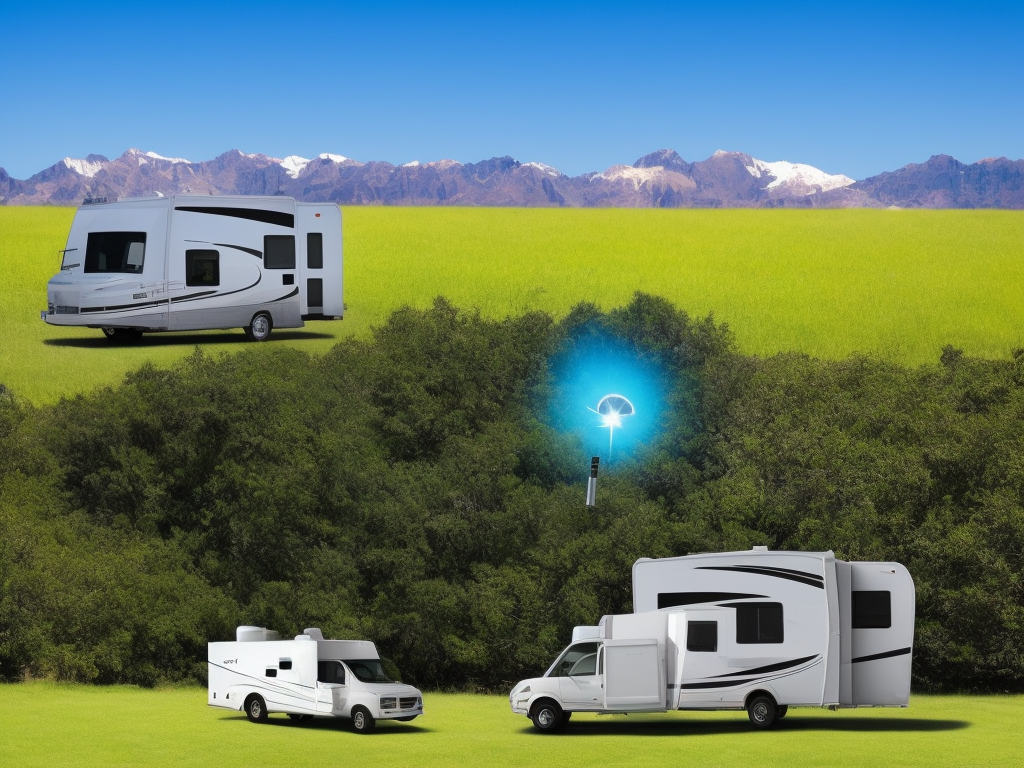Keeping your RV fridge cool while on the road is essential for preserving the quality and safety of your food. However, due to the constant movement and fluctuations in temperature, this can be a challenging task.
Fortunately, there are several tips and tricks that you can use to ensure that your RV fridge stays cold and your food remains fresh while driving.
This article will provide you with four practical tips to help you keep your RV fridge cool while on the move. From efficient temperature control to strategic packing techniques, we will explore ways to prevent your food from spoiling and save you from the inconvenience of having to throw away spoiled food upon arrival.
Whether you’re planning a long road trip or a weekend getaway, these tips will help you maintain a cool and safe RV fridge while driving.
Efficient Temperature Control
Efficient temperature control during RV travel is crucial in keeping food and beverages fresh and safe. Pre-freezing items before the trip can help keep the fridge temperature down and reduce the stress on the fridge’s cooling system. Frozen water bottles and ice packs can also be used to keep the fridge cold while driving. This technique not only helps in maintaining the temperature but also provides an additional source of drinking water during the trip.
It is also important to avoid opening the fridge door while driving as it can cause the temperature inside to rise rapidly, making it harder for the fridge to maintain a consistent temperature.
Considering the cooling capabilities of the fridge during trip planning is also essential. A 12V RV fridge can stay cool for up to twelve hours, but this depends on several factors such as the outside temperature, how often the fridge door is opened, and the amount of food stored in the fridge. It is recommended to pack the fridge with frozen applesauce pouches, bottled water, condiment packets, and hot dogs to help keep the fridge cold.
Running the fridge with an inverter can also help take the load off the battery and make it easier to keep food chilled and safe. By implementing these techniques, efficient temperature control can be achieved, ensuring that food and beverages are kept fresh and safe during RV travel.
Strategic Packing Techniques
Strategically selecting and packing frozen items that act as makeshift ice packs can help maintain the desired temperature inside the RV fridge during transit, ultimately ensuring that food stays fresh and edible.
Consider pre-freezing items like applesauce pouches, bottled water, condiment packets, and hot dogs. These items can help keep the fridge cool and prevent perishable foods from spoiling. Additionally, packing items like frozen vegetables and fruits can act as both a snack and an ice pack, providing a dual purpose for transit.
When packing the RV fridge, it is important to consider the placement of items. Place the frozen items at the bottom of the fridge, as cold air naturally falls and will help keep everything else cool. Additionally, consider packing a separate cooler with drinks and snacks. This will reduce the need to open the fridge frequently, allowing the temperature to stay consistent.
By strategically packing frozen items and considering the placement of items in the fridge, you can ensure that your RV fridge stays cool during transit and your food stays fresh.
Power Source Considerations
When considering how to maintain the temperature of an RV fridge while in transit, it is important to take into account the power source being used. The power source can affect the effectiveness of the fridge in keeping food and drinks cool while on the road.
One option is to use the RV battery to power the fridge while driving, but this can drain the battery quickly and may not be sufficient for longer trips. In addition, propane-powered fridges should not be run while driving due to safety concerns with flames, gas fumes, and enclosed spaces.
Another option is to run the fridge with an inverter, which can take the load off the battery and make it easier to keep food chilled and safe. Inverters convert DC power from the RV battery into AC power, which can be used to run the fridge and other electronic devices.
It is important to choose an inverter that is compatible with the fridge’s power requirements and to monitor the battery level to avoid draining it completely. Careful planning and consideration of the power source can help ensure that the RV fridge remains cool and effective while in transit.

